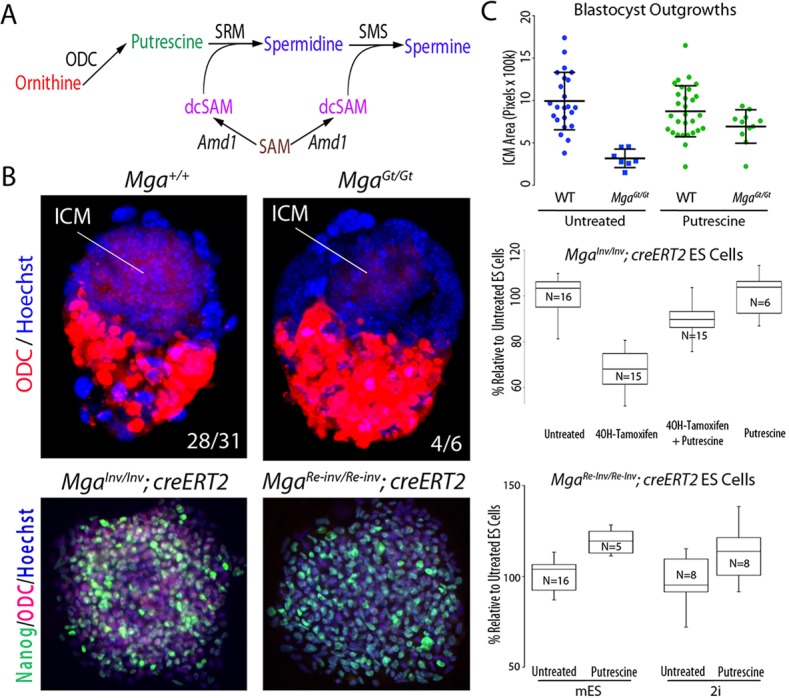Fig. 7.

Polyamine synthesis pathway and the expression of ODC in E4.5 embryos. (A) ODC is the rate-limiting step in the polyamine synthesis pathway that produces spermine and spermidine. ODC catalyzes the conversion of ornithine to putrescine. Putrescine is then converted into spermidine and spermine with the addition of decarboxylated S-adenosyl-methionine (dcSAM). (B) Projections of confocal Z-stacks show lower levels of ODC (red) in the EPI of MgaGt/Gt embryos at E4.5. Secondary antibody background is present on the TE of all embryos tested (top). MgaRe-inv/Re-inv; creERT2 ESCs treated with putrescine also show a lower level of ODC (red) compared with MgaInv/Inv; creERT2 ESCs when treated with putrescine (bottom). Numbers in panels indicate the number of embryos out of the total with an appearance similar to that shown. (C) ICM surface area after 4 days of culture of treated MgaGt/Gt cultures was greater than of untreated MgaGt/Gt cultures and was not different from treated Mga+/+ or MgaGt/+ cultures (top). Greater numbers of MgaInv/Inv; creERT2 ESCs that had inversion induced with 4OH-tamoxifen were present after 2 days of culture when treated with putrescine than when treated with 4OH-tamoxifen alone. Putrescine alone had no effect (middle). MgaRe-inv/Re-inv; creERT2 ESCs were less affected by exogenous putrescine when cultured in 2i conditions compared with mES conditions (bottom). N=number of replicate culture wells.
